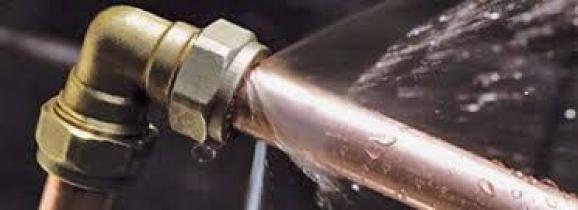This post which follows relating to Common Water Leaks In House is extremely informative. Don't bypass it.

Leakages not only cause waste of water but can also create unneeded damages to your residence as well as promote undesirable natural growth. Water leakages could go undetected given that most of the pipework in our house is hidden. By understanding and looking for daily situations that cause leakages, you can protect your residence from future leaks and also unnecessary damages. Today, we will consider 6 leak causes that might be causing your pipelines to drip.
Elbowing in roots
The majority of water leaks begin outside your house as opposed to inside it. If you observe an unexpected reduction in water pressure, say in your faucet, take some time to go out and analyze your lawn. You might notice damp patches or sinkholes in your backyard, which might suggest that tree roots are attacking water lines creating water to leak out. You can have your plumber look for intrusion, especially if you have trees or hedges near your building.
Corroded water systems
As time goes by, your plumbing system ages as well as corrosion such as rust may start eating away the pipes. This might be the cause of discoloration or bending on your water pipes. This asks for an examination with your plumber instantly. If our plumbing system is old, consider replacing the pipes given that they go to a higher risk of deterioration than the more recent models.
Defective Pipe Joints
The factor at which your pipelines attach is frequently the weakest web link in the waterline. Pipe joints can wear away over time, causing water leaks. The majority of pipeline joints are not easily noticeable. If you have loud pipelines that make ticking or banging sounds, particularly when the warm water is activated, your pipeline joints are possibly under a great deal of pressure. It is suggested to have your plumber inspect your system yearly.
Instant temperature level modifications.
Extreme temperature changes in our pipes can trigger them to broaden and contract unexpectedly. This expansion and contraction may cause fractures in the pipes, especially if the temperature level are below freezing. It would certainly be best if you kept an eye on how your plumbing functions. The presence of the formerly discussed scenarios regularly suggests a high threat.
Poor Water Connectors
At times, a leakage can be brought on by loosened hose pipes and pipes that supply your home appliances. Usually, shifting is what triggers the loosened water Connections. You may locate when it comes to a washing equipment, a tube might spring a leakage because of trembling throughout the spin cycle. In case of a water links leak, you may observe water running straight from the supply line or pools around your devices.
Blocked Drains
Clogged drains pipes might be irritating and also inconveniencing, but they can sometimes end up creating an overflow bring about rupture pipes. Keep getting rid of any type of materials that might decrease your drains that can clog them to prevent such troubles.
All the above are reasons for leaks however not all water leaks result from plumbing leaks; some leakages may come from roofing leakages. All leaks need to be fixed quickly to avoid water damage.
Leakages not just create waste of water however can likewise create unnecessary damages to your residence as well as promote undesirable natural development. By looking as well as recognizing for everyday circumstances that cause leakages, you can protect your house from future leaks and unnecessary damages. Today, we will certainly look at six leak causes that might be triggering your pipes to leak.
At times, a leakage can be triggered by loosened hose pipes and also pipes that provide your home appliances. In case of a water links leakage, you might observe water running directly from the supply line or pools around your appliances.
How To Check For Water Leak In Your Home
How To Check for Leaks
The average household's leaks can account for nearly 10,000 gallons of water wasted every year and ten percent of homes have leaks that waste 90 gallons or more per day. Common types of leaks found in the home are worn toilet flappers, dripping faucets, and other leaking valves. These types of leaks are often easy to fix, requiring only a few tools and hardware that can pay for themselves in water savings. Fixing easily corrected household water leaks can save homeowners about 10 percent on their water bills.
To check for leaks in your home, you first need to determine whether you're wasting water and then identify the source of the leak. Here are some tips for finding leaks:
Take a look at your water usage during a colder month, such as January or February. If a family of four exceeds 12,000 gallons per month, there are serious leaks.
Check your water meter before and after a two-hour period when no water is being used. If the meter changes at all, you probably have a leak.
Identify toilet leaks by placing a drop of food coloring in the toilet tank. If any color shows up in the bowl after 10 minutes, you have a leak. (Be sure to flush immediately after the experiment to avoid staining the tank.)
Examine faucet gaskets and pipe fittings for any water on the outside of the pipe to check for surface leaks.
Undetected water leaks can happen without the home or business owner even realizing. If you suspect a water leak, but not able to find the source. It is time to contact a professional water leak detection service, The Leak Doctor.
How To Find a Water Leak In Your Home
https://www.leakdoctor.com/blog/How-To-Check-For-Water-Leak-In-Your-Home_AE197.html

As an enthusiastic reader on How to detect water leaks in your home, I figured sharing that piece of content was sensible. Please take a moment to share this page if you appreciated it. I truly appreciate reading our article about Top Causes of Home Water Leaks.
Schedule Today!